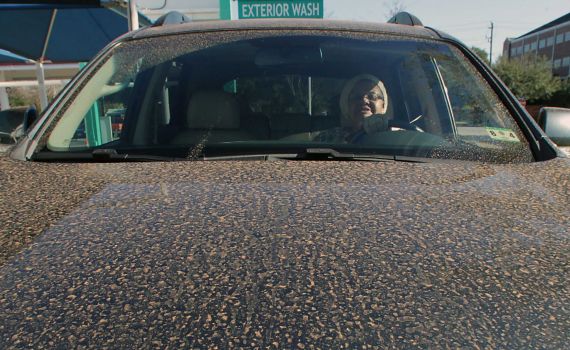
None of the above.
The dust traveled about 600 miles, in the mid- and upper-levels of the atmosphere, from iron-rich soils in central Mexico to Houston.
The dust originated in a region of Mexico containing a lot of iron at the surface, giving the dirt a "rusty" or "orange" look to it, said Andrew Artzer, a local forecaster who became curious about the dust after seeing it Sunday morning on his car. "It's much the same reason why the dust storms in northwest Texas and western Oklahoma are usually red."
On Saturday afternoon, a dust storm developed over central areas of Mexico. Winds gusted up to 40 mph in Durango and 45 to 50 mph in Zacatecas.
These strong down-sloping winds lifted widespread dust into the air.
Given that the source region of the dust around Durango and Zacatecas is around 6,000 to 7,000 feet above sea level, the dust did not have to rise very high to get caught in the mid- to upper-level southwesterly flow across northern Mexico and Texas, said Artzer, a meteorologist with ImpactWeather.
Late Saturday, an upper-level disturbance behind the cold front that moved through Houston earlier in the day produce light rain showers from Corpus Christi to Houston.
The dust in the atmosphere was precipitated out of the atmosphere and into the ground.
"So you can say it was a dirty, dirty rain," he said.
But not everyone was displeased by the mess left Sunday morning.
The owner of Mister Car Wash in West University Place, John Starks, said he saw twice as many cars than usual on Sunday. "We had around 500 cars in here yesterday, it was a good day for us."
And the dust, which carries nutrients, is also good for Houston's soil. So our lawns and gardens, though mostly dormant now, will not be unhappy in a few months.
Heather Alexander contributed to this report.



Comment: There is also another possibility - read the following articles:
Weird red rain in India panics people . . . 'blood red' rain falls
Rare showers of red rain fell in Sewanagala (Monaragala) and Manampitiya (Polonnaruwa)
Red rain caused by disintegration of comet: study
Alien particles found in 'comet rain' put under microscope at Welsh university
Red rain in Kannur, India May have origins in comets
Traces of alien life in Kerala rain: Report
Blood rain heads for southern Sweden